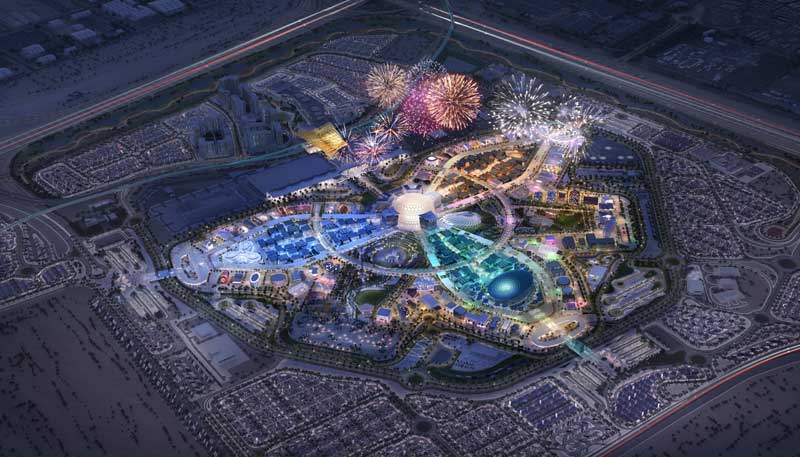
Ernst & Young (EY) have released an economic impact assessment (EIA) indicating that Expo 2020 would generate AED 122.6bn in gross value added (GVA) for the UAE, or around 0.5% of estimated national GDP per year from 2013 to 2031. The three phases of the project are expected to support 49,700 full time jobs per annum.
The study looks at three distinct phases for the project: the preparation phase (November 2013 to October 2020), the actual event (October 2020 to April 2021) and the legacy phase (April 2021 to December 2031).
The economic impact assessment published in 2013 for the bid (using a different methodology and produced by Oxford Economics) had estimated AED 88bn would be added to Dubai’s economy from 2014-2021. The new EY report estimates a smaller GVA of AED 60.4bn from 2013 through 2021. This includes direct spending, the indirect impact through the supply chain and induced benefits (increased spending by employees).
The initial EIA that was put together for the bid in 2013 also indicated that 277,000 jobs could be created by hosting Expo. This figure likely referred to “job years” over the 2014-2021 period, or around 34,600 jobs per annum – fewer than the latest report by EY indicates.
This is the most interesting part of the report from our perspective, as it outlines the plans for the post-event use of the Expo site and expected legacy contribution to the economy.
The Expo site will transition into a mixed-use development called District 2020, with a focus on sustainability and innovation to support growth in key industries including transport & logistics, tourism and education. Anchor tenants include Siemens and Accenture, and the new Dubai Exhibition Centre will be based here as well.
In addition, EY highlight a number of non-quantifiable legacy benefits for Dubai and wider UAE, including improved trade relations with participant countries, improved business relationships at a firm-to-firm level and a higher international profile for Dubai and the UAE as a place to do business, visit on holiday and invest.
In our view, the hosting of a mega-event like a world expo can achieve two important things:
The creation of new infrastructure to drive longer-term economic growth in the host city, or to accelerate the execution of infrastructure projects that might have taken longer to achieve without such an event.
To boost the image of the host city on the world stage, showcasing what the host city can offer from a business, tourism and investment perspective and also to highlight the host city’s ability to successfully plan, manage and execute a mega-event.
The consequences of hosting previous world expos (and other mega events such as sporting world cups, or the Olympic Games) have been mixed. The Shanghai Expo in 2010 resulted in the creation of a new transport infrastructure including a new airport terminal, new roads, a new cruise ship terminal, new subway lines and the renovation of existing historic buildings. New entertainment venues, parks, and residential real estate development have all helped to put Shanghai on the map as a global city and a place to do business.
However, hosting mega-events have also resulted in higher than expected costs, increased debt for host cities, white elephants and abandoned buildings. The 1984 Louisiana World Expo in New Orleans was forced to declare bankruptcy and was only able to remain open for the duration of the event with government support.
The key to ensuring a successful legacy following the hosting of a mega event appears to be meticulous and effective planning on what the legacy will be, even while putting the bid together. Certainly, the latest report suggests that Dubai has thought very carefully about what it wants Expo 2020 to deliver for the city and its residents.
Click here to download the report.